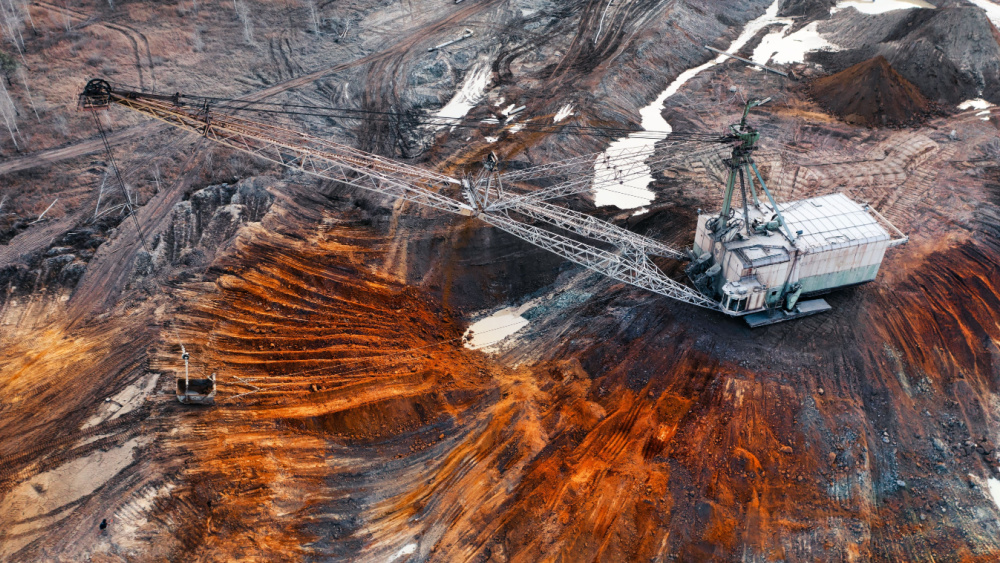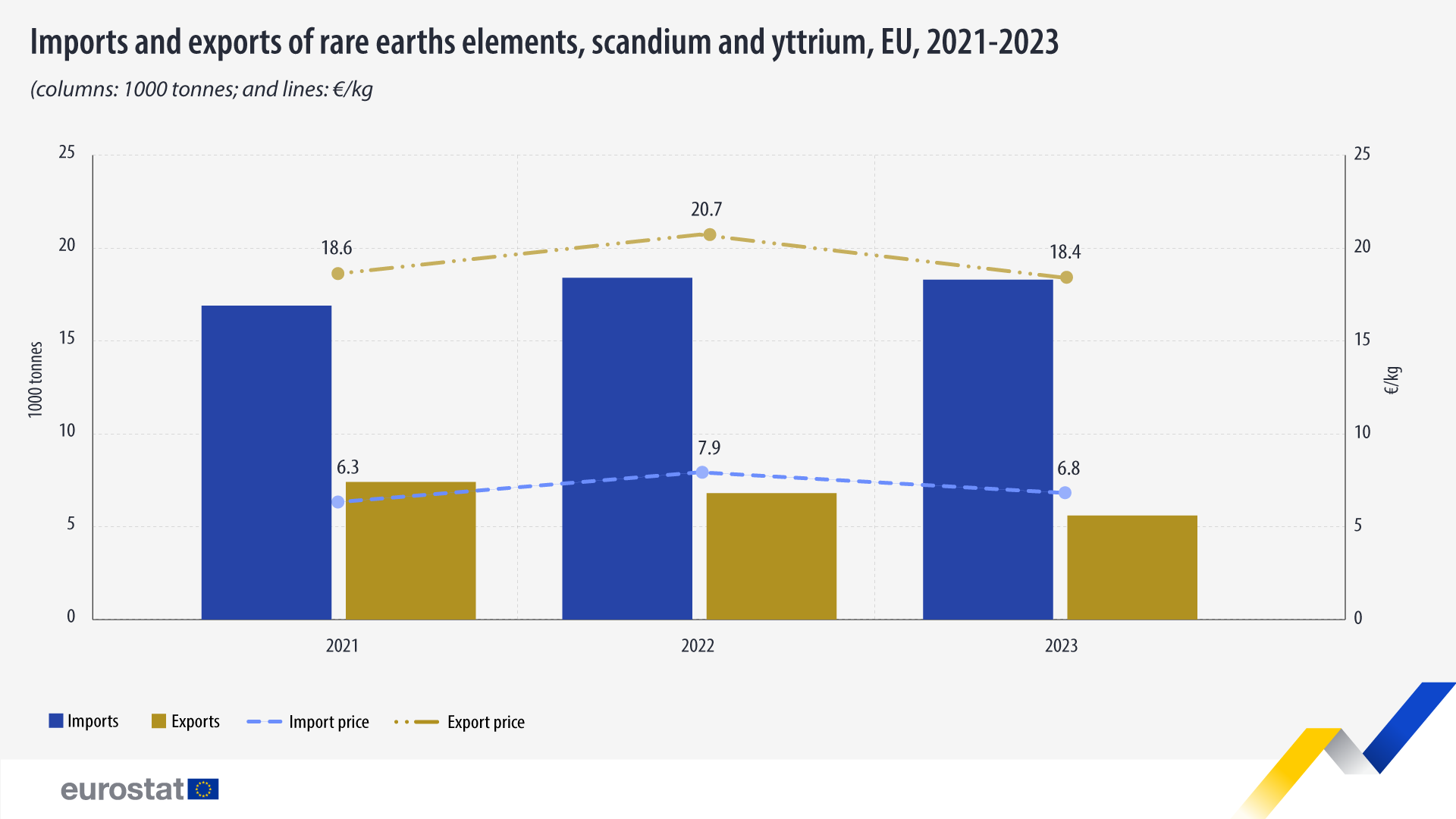Trade in rare earth elements decreased in 2023

A total of 18 300 tonnes of rare earth elements (REE+) valued at €123.6 million were imported to the EU in 2023, marking a decrease of 0.5% in volume and 15.2% in value compared with 2022.
At the same time, 5 600 tonnes of rare earth elements valued at €102.3 million were exported from the EU, a decrease of 18.7% in volume and 27.8% in value compared with 2022.
Rare earth elements are a group of 17 specialty metals with a high supply risk and significant economic importance, used in various high-tech applications.
This article presents a handful of findings from a more detailed Statistics Explained article on international trade in critical raw materials.
Source dataset: Eurostat extraction
The average price for imports or rare earth elements was €6.8 per kilogram, 14.8% less than in 2022, while the price of the exports was €18.4 for each kilogram of rare earth elements, a decrease of 11.2%.
39% of rare earth elements imports came from China
China was the largest partner for imports of rare earth elements, accounting for 39.0% of the total weight of imports, or 7 100 tonnes. Malaysia followed, contributing 33.1% of imports, or 6 100 tonnes, and Russia, with 22.0% of the imports, or 4 000 tonnes.
Source dataset: Eurostat extraction
For more information
- Statistics Explained article on international trade in critical raw materials
- Publications on international trade in goods
- Thematic section on international trade in goods
- Database on international trade in goods
Methodological notes
REE+ are a set of 17 chemical elements in the periodic table, specifically the 15 lanthanides plus scandium and yttrium. They are used in everyday technologies like cellphones and computers but also in advanced medical technologies like MRIs, laser scalpels and even some cancer drugs. In defense applications, they are used in satellite communications, guidance systems and aircraft structures. They are critical in several green technologies, especially those that support net zero carbon emissions goals, like wind turbines and electric vehicles. Rare earth elements defined by the combined nomenclature (CN) classification are the following:
- 28053010 - Intermixtures or interalloys of rare-earth metals, scandium and yttrium.
- 28053040 - Scandium, of a purity by weight of >=95% (excl. intermixtures and interalloys).
- 28053080 - Rare-earth metals, scandium and yttrium, of a purity by weight of <95% (excl. intermixtures and interalloys).
- 28461000 - Cerium compounds.
- 28469030 - Scandium compounds, inorganic or organic.
- 28469090 - Compounds of mixtures of rare-earth metals, yttrium and scandium, inorganic or organic.
- 28053021 - Cerium and lanthanum, of a purity by weight of >=95% (excl. intermixtures and interalloys).
- 28053029 - Praseodymium, neodymium and samarium, of a purity by weight of >=95% (excl. intermixtures and interalloys).
- 28053031 - Gadolinium, terbium and dysprosium, of a purity by weight of >=95% (excl. intermixtures and interalloys).
- 28053039 - Europium, holmium, erbium, thulium, ytterbium, lutetium and yttrium, of a purity by weight of >=95% (excl. intermixtures and interalloys).
- 28469040 - Lanthanum compounds, inorganic or organic.
- 28469050 - Compounds of praseodymium, neodymium or samarium, inorganic or organic.
- 28469060 - Compounds of gadolinium, terbium or dysprosium, inorganic or organic.
- 28469070 - Compounds of europium, holmium, erbium, thulium, ytterbium, lutetium or yttrium, inorganic or organic.
If you have any queries, please visit our contact us page.


